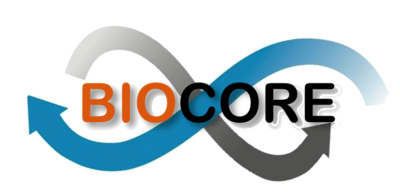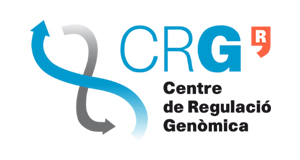
Bioinformatics
GINYS-CRG-006
PRBB (Parc de Recerca Biomèdica de Barcelona) Building
Doctor Aiguader, 88
08003 Barcelona
Spain
Room L460
The Bioinformatics Unit offers researchers from the CRG-CNAG / PRBB and external organizations consulting services, NGS planning and other genomic experiments, NGS data processing, analysis and management, software and database development, training in bioinformatics and access to high performance computing resources. to the CRG.
The Unit works in synergy with the Genomics Unit and the Biomolecular Protein and Screening Technologies Unit (BMS-PT) to support users using high-throughput sequencing technologies, from planning an experiment to delivery of timely and reliable results.
Unit site at CRG facilities website.
Services
GENOMICS
- Reference-based and de novo assembly of eukaryotic and prokaryotic genomes.
- Genome re-sequencing and evaluation of the quality of genome assemblies.
- ChIP-seq (TFs, histone modifications): peak call, differential junction analysis between sample groups, peak annotation.
- Analysis of the whole exome and the whole genome: call variants, CNV.
- Identification and annotation of structural variants of DNA for common and rare human diseases: individual and family analysis, mutations in the cancer-conducting gene.
- Genome comparison.
- Functional genome annotation: ab initio gene prediction, gene annotation, transcripts, DNA motifs, promoters, and other regulatory elements of DNA.
- Analysis of 5C, Hi-C, ATAC-seq and other high performance data.
TRANSCRIPTOMICS
- New and reference-based assembly of eukaryotic and prokaryotic transcriptomes.
- Functional transcriptome annotation: ab initio gene prediction, gene annotation, transcripts, DNA motifs, promoters, and other regulatory elements.
- Calling variants from transcriptome sequencing data.
- Analysis of commercial and customized microarrays: genes expressed in a differential way, comparison of groups.
- RNA-seq for mRNA: discovery of new transcripts, genes / transcripts expressed differently.
- Functional analysis of differentially expressed genes / transcripts: terms of gene ontology, DNA motifs, and pathway enrichment analysis.
- RNA-seq for small, non-coding RNA: differential expression, discovery of new microRNAs, prediction of microRNA targets.
- Real-time PCR analysis of OpenArray and other high-performance experimental data.
- Identification of batch effects and visualization of data and results: hierarchical grouping, heat maps, dendrograms, volcano graphs, analysis of main components for the global (dis) similarity between experiments.
- RNA target-based sequencing: RIP-seq, iCLIP, CLIP-seq, and others.
- Analysis of B and T cell repertoires (adaptive immune receptor repertoires, or AIRR) based on high-throughput sequencing data: germline allele assignment, clone identification, visualization of clonal frequencies.
METAGENOMICS
- Amplicon analysis (16S rRNA genes), whole genome and transcriptome sequencing data.
- Identification of microbial communities, taxonomic diversity and abundance at the levels of gender, family, order, class, phylum.
- Conservation and abundance of functional modules of bacterial genes and biochemical pathways.
- Estimation of microbial diversity and sequence coverage.
- ORF prediction and functional annotation.
- Phylogenetic analysis.
- Comparative analysis of samples: microbial profiles, terms of genetic ontology, metabolic and pathway analysis.
STRUCTURAL PROTEOMICS AND BIOINFORMATICS
- Prediction and functional annotation of proteins.
- Analysis of the effects of SNPs and other variations on the structure and function of proteins.
- Alignment of multiple sequences.
- Assignment of orthologs and paralogs.
- Phylogenetic analysis and tree construction.
- Protein structure comparison and 3D homology modeling.
- 3D protein-protein and protein-binding coupling.
- Prediction of B and T cell epitopes.
DATABASES, WEBSITES AND SOFTWARE
We have extensive experience in the design, development and support of the following bioinformatics resources (see our related projects here):
- Databases: relational and NoSQL.
- Websites for submitting, searching, and analyzing data.
- Web tools.
- LIMSs (Laboratory Information Management System) for managing laboratory operations, data flow, and communication with external users and collaborators.
- Software evaluation and benchmarking.
- Software development: bioinformatics scripts; data processing and analysis pipes; integrative bioinformatics web applications; custom genome browsers.
- NextFlow drives.
- External and internal data integration solutions.
OTHERS
Please contact us with any bioinformatics issues you may have, even if they do not fit with those listed in our services. Being part of various communities and bioinformatics alliances we can find the solution or experts in the field. Among the personalized and additional services we offer are the following:
- Support in the design and analysis of custom NGS experiments.
- Analysis and statistical graphs: R scripts, descriptive and inferred statistics, hypothesis testing, sample size estimation, PCA, grouping, linear regression, correlation, ANOVA.
- Individual training.
- Sending data to GEO, ArrayExpress, SRA, and other public data repositories.
- Exploit public databases and publications and reanalyze published data.
- Manuscript preparation: methods of writing, results, interpretation and visualization of results.
- Grants: writing methods, data management and exchange methodology, design of experimental and bioinformatics analyzes, obtaining preliminary results, interpretation of results.
Equipment
Software
Master of Pores: Nextflow pipeline for analysis of direct RNA Nanopore reads ( https://github.com/biocorecrg/master_of_pores )
FA-nf (functional annotation): NextFlow pipeline for functional annotation of proteins from non-model organisms based on InterPro and Blast ( https://github.com/guigolab/FA-nf )
HiC-inspector: High-throughput conformation capture (Hi-C) allows to study the three-dimensional architecture of whole genomes through the detection of long range chromosomal interactions ( https://github.com/HiC-inspector / HiC-inspector )
Indrop-Flow: Indrops analysis pipeline based on DropEST ( https://github.com/biocorecrg/indrop )
Mothur procedures: Shell scripts for processing ITS (fungi) and 16S rRNA (bacteria) amplicon sequencing data (MiSeq) in mothur. (< a class = "external free" href = "https://github.com/biocorecrg/microbiome_procedures" rel = "nofollow"> https://github.com/biocorecrg/microbiome_procedures )
TEQC: R package for Quality control of target capture experiments ( https://www.bioconductor.org/packages/devel/bioc/html/TEQC.html ) < / div>
Transcriptome assembly: Nextflow pipeline for de novo transcriptome assembly and annotation based on Trinity and Transdecoder ( https://github.com/biocorecrg/transcriptome_assembly )
& nbsp;
Equipment
- Linux cluster with 3020 cores for computing and more than 200 compute nodes and servers.
- Univa Grid Engine batch queuing system
- 87 compute nodes with 2 Intel Xeon E5-2680 20M Cache 8 core at 2.70 Ghz, 128 GB memory
- 56 compute nodes with 2 Intel Xeon E5530 4 core at 2.40GHz, 48 GB memory
- High memory compute node with 2 processor Intel Xeon E5-2699 v4 22 core at 2.20GHz, 1 TB memory
- High memory compute node: with 8 processor Intel Xeon E7450 6 core at 2.40 GHz, 512GB memory
- High memory compute node with 4 processors Intel Xeon E7540 6 core at 2.00 GHz, 256 GB memory
- 60 heterogeneous compute nodes with different hardware specifications
- 4.5 PB of storage EMC-Isilon, DDN and Nexsan
Staff
Publications
Selective cleavage of ncRNA and antiviral activity by RNase2/EDN in THP1-induced macrophages
Cellular and molecular life sciences: CMLS.
Cellular and molecular life sciences: CMLS.
LCOR mediates interferon-independent tumor immunogenicity and responsiveness to immune-checkpoint blockade in triple-negative breast cancer
Nature Cancer
Nature Cancer
Coordinated post-transcriptional control of oncogene-induced senescence by UNR/CSDE1
Cell Reports
Cell Reports





